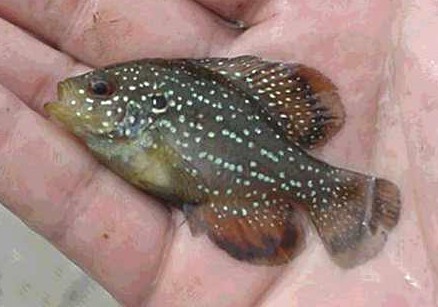
Enneacanthus gloriosus
FAMILY
Centrarchidae
TAXONOMY
Enneacanthus gloriosus Holbrook, 1855, South Carolina, Georgia,
and Cooper Rivers, South Carolina, United States. No
subspecies are recognized.
OTHER COMMON NAMES
German: Kiemenfleck-diamantbarsch.
PHYSICAL CHARACTERISTICS
Maximum total length 3.7 in (9.5 cm). Similar in general appearance
to a bluegill, but with proportionally longer fins; dark
“teardrop” band beneath eye; vertical, dark banding on body;
and numerous metallic blue spots in the head, body, and vertical
fins.
DISTRIBUTION
Eastern United States, from southern New York to western
Florida.
HABITAT
Prefers vegetated freshwater lakes, ponds, pools, and stream
backwaters.
BEHAVIOR
Solitary; seldom strays far from cover. Easily dominated by
other centrarchids; typically found in substantial numbers only
in habitats Lepomis species do not find congenial, such as the
highly acidic black waters of the New Jersey pine barrens.
FEEDING ECOLOGY AND DIET
Normally feeds on snails and other invertebrates near cover of
vegetation.
REPRODUCTIVE BIOLOGY
Males build nests 4–12 in (10.2–30.5 cm) in diameter in algae
or soft substrate. Spawning occurs in spring, perhaps extending
from late winter to early summer. Little is known of its reproductive
biology in the wild.
CONSERVATION STATUS
Not listed by the IUCN.
SIGNIFICANCE TO HUMANS
Sometimes kept as an aquarium fish.
Other popular Animals
Photo Gallery of - Blue-spotted sunfish





 Animalia Life
Animalia Life